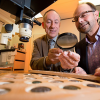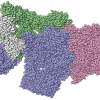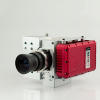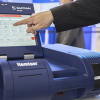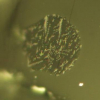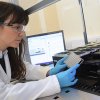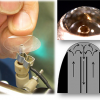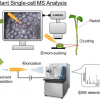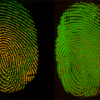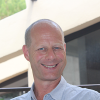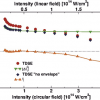Spectroscopy News
EMBL-EBI researchers develop a new computational method to study biological signalling networks in healthy and cancer cells from discovery mass spectrometry phospho-proteomics.
Renishaw recently broke ground on its new 133,000 ft2 office and warehouse facility in West Dundee, IL, USA, about 40 miles from Chicago. The two-storey facility will be located at the Oakview Business Park and will be the company’s North American headquarters. The new building, planned to be ready in June 2016, will also include space for product development, testing, warehousing and distribution. The facility will consolidate the company’s two existing sites and can also accommodate future expansion.
Shimadzu was chosen as the award recipient of the 2015 Frost & Sullivan Asia Pacific Mass Spectrometry Company of the Year.
To be chosen as the company of the year two key factors were evaluated—Visionary Innovation & Performance and Customer Impact—according to the criteria identified below.
A team of researchers from Macquarie University, Sydney, Australia, have used a high-power, transportable XRF spectrometer to analyse artefacts from ancient Greece.
High-throughput mass spectrometry has been used in one of the largest and most detailed studies of animal molecular biology ever undertaken, to study the cellular proteins of nine species representing a broad cross-section of the animal kingdom. Results confirmed the similarity between species, leading to avenues to study the genetic basis for diseases.
SPECIM, Spectral Imaging Oy Ltd, has received 5.3 M€ of financing to ensure its growth. The financing package consists of venture capital financing by Teknoventure Oy of Oulu, Finland, and R&D financing by Tekes, the Finnish Funding Agency for Innovation. The company, which was founded in 1995 by three former researchers of VTT Technical Research Centre of Finland Ltd, is known for its hyperspectral technology. The spectral imaging camera products are widely used in various industrial, environmental and defence applications.
Morpho Detection has won a contract with UK Airport Operator Manchester Airports Group Plc (MAG) for 44 Itemiser 4DX explosives trace detectors (ETD). The Itemiser 4DX is based on ion mobility spectrometry and quickly detects and identifies trace amounts of explosives on skin, clothing, carried items, bags, vehicles and other surfaces.
Agena Bioscience, manufacturers of the MassARRAY quantitative method for nucleic acid detection via MALDI-TOF mass spectrometry, has set up a subsidiary in Shanghai, China. “The Chinese market represents a significant portion of Agena Bioscience's global sales with almost 60 MassARRAY® Systems installed to date. Direct presence within China will allow us to expand our reach and foster a high degree of engagement with our local customers in that region”, said Pete Dansky, CEO.
Tiny beads of volcanic glass found on the lunar surface during the Apollo missions are a sign that fire fountain eruptions took place on the Moon’s surface. Now, using secondary ion mass spectrometry, scientists from Brown University and the Carnegie Institution for Science have identified the volatile gas that drove those eruptions.
Analytik Jena celebrates its 25th anniversary. As one of the first companies founded in East Germany after the fall of the Berlin wall, they have grown to offer a wide range of analytical products including a wide wide of atomic spectroscopy instrumentation.
The Novo Nordisk Foundation has awarded a grant of DKK 60 million for an ambitious new research programme in clinical proteomics at the Novo Nordisk Foundation Center for Protein Research, University of Copenhagen. This project is to be led by Professor and Programme Director Matthias Mann. Matthias Mann has authored and co-authored more than 500 publications with a total citation count of more than 100,000, making him one of the most highly cited researchers worldwide.
A clinically approved assay system based on surface enhanced resonance Raman spectroscopy has been launched by Renishaw Diagnostics.
Avantes has been awarded ISO 9001:2008 certification. They have implemented a robust quality management system to guide and govern all their operations. “With independent registration of our firm by an outside auditor, you can be assured that we have committed to the highest standards in our operations, production, and management”, says Benno Oderkerk, CEO.
Material dissolved in the liquid at the port tip is immediately transported into the mass spectrometer, ionised, detected and characterised.
Thanks to seven years of work done at the RIKEN Quantitative Biology Center and Hiroshima University, scientists can take a peek into a single plant cell and—within minutes—get a view of the small molecules, including metabolites, hormones, nutrients and lipids inside it by mass spectrometry.
Agilent is collaborating with researchers from Weill Cornell Medical College, in New York, USA, to investigate the molecular underpinnings of sporadic amyotrophic lateral sclerosis using a multi-omics approach.
Watch the imprint of a tyre track in soft mud, and it will slowly blur, the ridges of the pattern gradually flowing into the valleys. Using imaging mass spectrometry, researchers at the National Institute of Standards and Technology (NIST) have tested the theory that a similar effect could be used to give forensic scientists something they have long wished for: a way to date fingerprints.
SCIEX has announced that Aarhus University Hospital in Denmark has invested in SCIEX QTRAP® 6500 technology to develop novel mass spectrometry-based assays for clinical research laboratories. Scientists at the hospital’s Department of Clinical Biochemistry are using the QTRAP 6500 LC-MS/MS system for advanced clinical research.
Canadian researchers have used SERS to screen blood samples for molecular traces that indicate the presence of precancerous polyps in the colon, a key warning sign for colon cancer. Their results may yield a cheaper and less invasive initial screening test for colon cancer that could complement colonoscopy, though further clinical trials will need to demonstrate the safety and effectiveness of the blood test before it is routinely used.
The combination of ab initio numerical experiments and theory shows that optical tunnelling of an electron from an atom can occur instantaneously.


